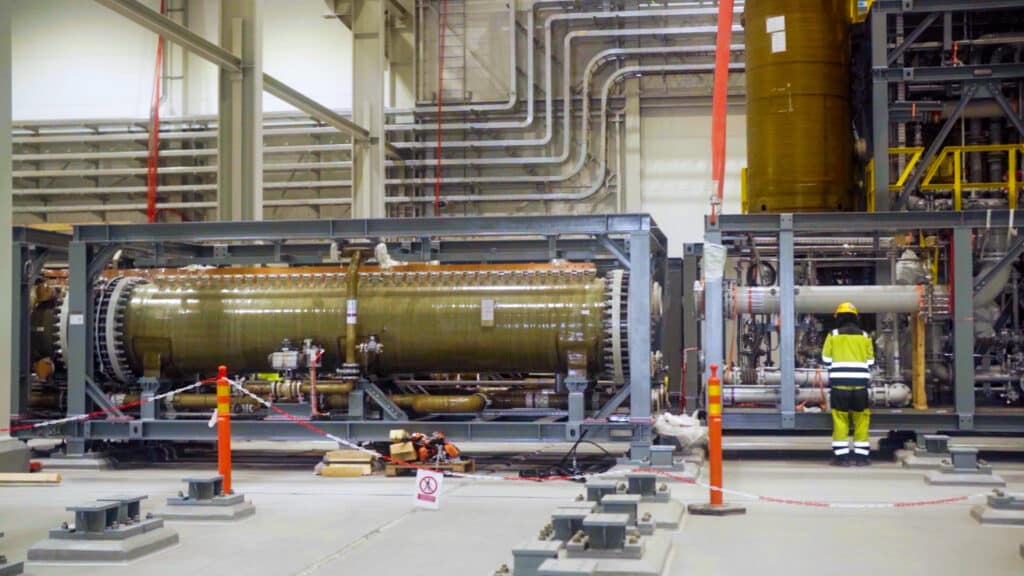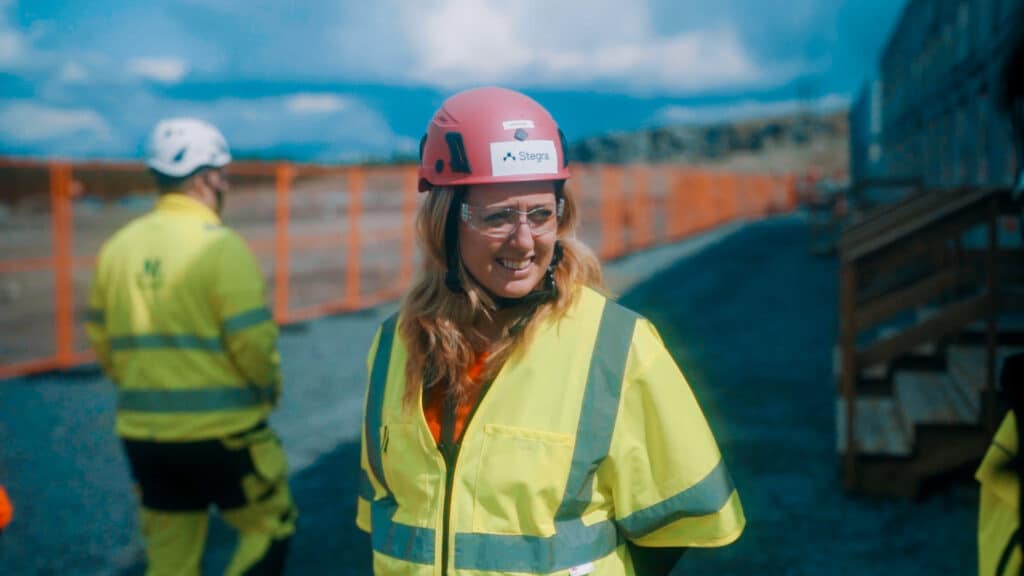At Boden Industrial Park, Europe’s largest hydrogen plant is now under construction. Here, Hedvig Paradis is working to take green technology from research to real-world industry – and the first electrolyzers are now being installed.
Four rectangular, steel-clad buildings are lined up on an area measuring approximately 500 x 500 meters – an area the size of just over 35 football fields. It’s just a fraction of Stegra’s total 270 hectares at Boden Industrial Park, but this is where the heart of future steel production rises. The buildings look almost like hangars, gleaming in the early summer sun. Nearby, the ground has been excavated and is being prepared for various forms of cooling systems and transportation solutions. Construction cranes rise to the sky and workers in high-visibility clothing move between modules and foundations – a place in motion, where the green industry of the future is taking physical shape.
From drawing board to reality
Hedvig Paradis, Head of Hydrogen Technology at Stegra, has followed the hydrogen initiative from concept to industry. With a background in both academia and the energy industry, where she has a PhD in hydrogen technology, she has been a key person in the development of the plant.
– “I joined the company when we were about 20 employees, and it’s great to be involved all the way – from vision on the drawing board to standing here among the buildings and seeing the electrolyzers come into place,” she says.

Europe’s largest plant
When the plant is completed, 37 large electrolyzer modules will be installed, spread over four buildings. Each module is around 40 meters long and is installed on a rolling basis – approximately one per week.
In total, the plant will have an electrolysis capacity of over 700 megawatts. This makes Stegra’s investment the largest in Europe, and one of the largest in the world.
With an annual production capacity of over 100,000 tons of green hydrogen, Stegra’s plant in Boden can significantly reduce carbon dioxide emissions compared to producing the same amount of hydrogen using fossil fuels. The reduction is equivalent to the emissions from all of Sweden’s domestic flights several times over.
Next milestone: commissioning
The raw material for production is water from the Lule River, which undergoes several purification steps to ensure that the electrolysis process takes place with the highest possible precision. In the electrolysis plant, the water molecules (H2O) are split into oxygen and hydrogen. The hydrogen is transported to the production of the direct reduced iron used in steel production, while the oxygen is currently vented.
– “We are looking at solutions to utilize the oxygen as well, but right now the focus is on getting the entire chain up and running. What we produce here must match the needs of the iron and steel section. The goal is a seamless production chain – from electricity to finished steel.
An important part of the work ahead is so-called cold commissioning, where equipment is tested and flows are calibrated before start-up. After that, the next big step awaits: bringing in electricity, gas and gradually starting up production.
– I’m very much looking forward to seeing all the electrolyzers installed and starting the test drive. It will be a great moment.
 Hedvig Paradis, Head of Hydrogen Technology at Stegra
Hedvig Paradis, Head of Hydrogen Technology at Stegra
Boden at the heart of the transition
For Boden, hydrogen is more than a technological solution – it is a new identity taking shape. With Europe’s largest hydrogen plant now being built in the municipality, the door is opening to a whole new ecosystem of skills, professions and collaborations. It will create the conditions for education, research and innovation in the field of energy – while leaders in Europe point to hydrogen as a major key to meeting climate goals.
For Hedvig Paradis, it is not only a historic technological shift – but also a deeply meaningful task on a human level.
– Hydrogen is at the heart of producing green steel. The fact that I have the opportunity to work with this particular part – which makes the whole process sustainable – feels incredibly meaningful.